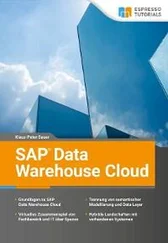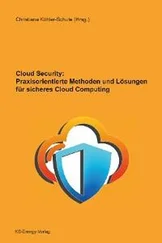He then looked down at the pile of papers on his desk and began to sort through them, putting them in order.
“Now, let me tell you what I’ve been up to,” he said. “My assistant and I have already managed to do quite a bit of the preliminary research on when and how The Obsidian Cloud came to be published, who its author might be, and so on. Here’s what we’ve found out so far.
“As I said in my letter, even the physical dimensions of the book are quite uncommon.”
The irregular size of The Obsidian Cloud was what had caught the attention of Soulis when he first saw my copy. He’d taken a ruler to it — it was fifteen inches long by eleven inches wide. This was an unusual format known as an “imperial quarto,” which had gone out of style by the end of the nineteenth century. That was partly because these quartos were so large they didn’t fit into regular bookcases. But they were also unwieldy, as though they’d been designed more for lying on a sloped reading table or a lectern than being held.
And even in their heyday, imperial quartos tended to appear in limited editions, for they were very expensive to produce. The printing presses had to be adjusted to suit them, and that resulted in extra labour costs.
Some collectors of rare books called them “Scottish quartos,” because, for the most part, only printers based in Scotland would agree to produce them. With the Scots’ reputation for thriftiness, they believed they could make an acceptable profit out of these quartos by using up the remnants of quires of paper that would otherwise be discarded.
SOULIS HAD MANAGED to find some facts on The Old Ayr Press — the printer of The Obsidian Cloud —in a comprehensive history of Scottish printing. The firm, which was very small, had operated in the Ayrshire town of Kilcorran for a hundred and fifty years but had gone out of business during the Great War. The building where it was once situated had been demolished and the land was now part of a public housing development. The firm’s records had probably been consigned to the rubbish dump, too, so the exact publication date of The Obsidian Cloud might always remain a mystery. The title page gave the year of printing only as 18-something. The last two numbers had been so obscured by mould that the date could have been any time in the 1800s.
SO MUCH FOR THE PRINTER. But what Soulis would have preferred by far was information on who published the book. The publisher, in consultation with the author, would get a book ready for print and make sure the finished book was distributed and read. So knowing the publisher always opened a fruitful channel of inquiry for later researchers.
Sadly, in the case of The Obsidian Cloud , no publisher was listed in the front matter of the book. Possibly the Rev. K. Macbane had preferred to have the book printed privately — a lot of clergymen authors used to do that so they couldn’t be accused of seeking either fame or commercial success. In that case, The Old Ayr Press, having receiving payment from Macbane for the printing of The Obsidian Cloud , would simply have sent the entire print run to him to dispose of as he wished. It would be up to Macbane to send copies to his friends, or to magazines and newspapers. If he was ambitious enough, he might try to place them with various booksellers around Ayrshire, or even Scotland at large.
But no record of any such efforts had so far been found. Soulis had been methodically searching all the usual places: nineteenth-century book catalogues, literary journals, national and local newspapers, even registries of Scottish clergy. As yet, he hadn’t come across any mention of a Rev. K. Macbane, or of The Obsidian Cloud .
All of this made Soulis a little suspicious. Surely a book and an author dealing with such a sensational incident were bound to have attracted at least some attention, somewhere?
“In our business, it’s unusual to come across a rare book that presents so many interesting challenges,” he said. “I’m determined to get to the bottom of this one.”
I wondered: was it perhaps it a fake? Might someone have put it together to look like an old book, when it actually wasn’t?
Soulis assured me that he’d considered that possibility right from the start. He did that, as a matter of course, with any rare book.
“We’re not as easily hoodwinked as some people think,” he said. “One of the first things we do nowadays is to conduct a lab analysis. In the case of The Obsidian Cloud , the paper, the ink, the glues, and the bindings are completely genuine. So if any fakery’s involved, it’s certainly not in the materials the book’s made of.”
But what about this fantastic cloud at the core of the book? Surely, in the natural world, such a thing couldn’t really have happened? I put those questions to him outright.
“For myself, I don’t have the slightest doubt,” said Soulis.
He saw the look of surprise on my face.
“By that I mean I, personally, don’t have the slightest doubt the cloud’s nothing but a figment of Macbane’s imagination,” he said. “But, just to make sure, I had to see if there was any possible historical basis for it.”
He knew I wanted to hear much more on this, so he dug around for another paper amongst the pile on his desk and told me what he’d found out.
A PROFESSOR IN THE university’s history department, who took a special interest in the effects of weather-related events on history, had assured Soulis that some cases of exceptional weather did indeed make themselves so noteworthy as to be well documented. The great drought of the year 530, for example, was the direct cause of the massive outbreak of bubonic plague that devastated the Roman Empire. Then there was the unexpected hurricane that struck the Spanish Armada in 1588 and thus changed the entire course of European history. Another famous instance was the period known as the Little Ice Age, which brought about the Salem Witch Trials of 1692—the women who were hanged were found guilty of causing the unseasonable cold.
But most other “weather matters” were, from the standpoint of historians, recurrent and predictable. It was a quite normal Russian winter, for example, that was in large part responsible for wiping out Napoleon’s armies in 1812. Those Cape Horn tempests we hear so much about? They had, for centuries, sunk flotillas of ships and hindered exploration and trade. No ship’s captain with a modicum of competency could complain he was taken by surprise if he ran into one.
As for what might be called non-scientific accounts of history, there were any number of symbolic, or mythic, or allegorical appearances of weather events — Noah’s Flood, or the Parting of the Red Sea, to cite well-known instances. Indeed, religious literature was prone to searching for omens in sea and sky, or for any other obliging antics by the elements.
In short, the professor of history concluded, The Obsidian Cloud surely belonged to this latter, non-scientific category, for he had found no record in any reliable historical source of such an event ever having happened in the skies over Duncairn, or Scotland, or anywhere else on this earth.
I PRESUMED THAT settled the weather matter: Macbane’s cloud was an invention, as we’d already suspected. But I could see from Soulis’s expression that there was more to come.
“The professor’s conclusion would have satisfied me completely, but I was in for a bit of a surprise,” he said. “You see, I’d also written a letter to the Royal Meteorological Society in London to request an opinion on the cloud. I eventually got a lengthy response from the society’s nubionomist — that’s what they call their expert in cloud formations.” On his desk, Soulis found several pages stapled together. “Here it is. I’ll just summarize it for you.”
Читать дальше











